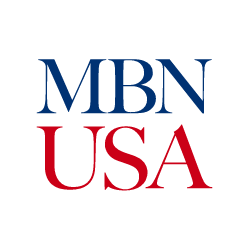Over the last few years, a
historical infusion of federal money and a growing diversified economy have
created a promising outlook for Native businesses and communities, which
include Native Americans, Alaska Natives and Native Hawaiians. But for now, unique
struggles remain in Indian Country.
“Indian Country has unique
access to capital concerns. Many of our remote reservation communities lack
access to some of the basic services most take for granted, like broadband
internet. The historic federal investments made over the last couple of years
are starting to come in and make a difference, but it will be sometime before
we are close to parity,” said Chris James, president and CEO of The National
Center for American Indian Enterprise Development (The National Center).
With over 50 years of
assisting American Indian Tribes and tribal people with business and economic
development, The National Center has evolved into the largest national Indian
specific business organization in the nation.
MBN USA recently caught up
with James and Amanda Smith, president of the Native American Business, which
was founded in 2019 and is another advocate for Native American business owners
and entrepreneurs.
MBN USA recently caught up
with James and Smith to discuss business challenges and opportunities in Indian
Country and the road ahead state of Native-owned companies.
Q: What is the state of
Native-owned businesses in the supply chain?
Chris James (CJ): The easy answer is strong, but there is always room
for improvement. One of our primary focus areas has been increasing the number
of Native American, Alaska Native and Native Hawaiian-owned contractors in the
supply chain, both government and large, Fortune 500 companies. We do this both
as a connector — we host matchmaking events at our annual Reservation Economic
Summit and other events — and through direct training run by our APEX
Accelerator (formerly Procurement and Technical Assistance Center). More and
more companies are coming to the realization that corporate diversity extends
beyond their own workforce; it includes their entire supply chain and the
businesses with which they work. We serve as a resource — and are often the
first call - for the companies committed to diversifying their supply chain.
Amanda Smith (AS): Native American-owned businesses have historically
been underrepresented in the supply chain and are still present-day because of
contributing factors such as lack of access to capital, resources and
procurement opportunities.
Q: What are the major challenges for Native-owned
businesses and how is your organization helping them to overcome these
challenges?
CJ: In some ways our challenges aren’t much different from
other businesses. We are trying to navigate an economy that continues to hum
despite headwinds created by high interest rates and nagging inflation.
Starting or growing a business while the cost of capital is at two-decade highs
is certainly a challenge.
But in other ways, we are
different. Indian Country has unique access to capital concerns. Many of our
remote reservation communities lack access to some of the basic services most
take for granted, like broadband internet. The historic federal investments
made over the last couple of years are starting to come in and make a
difference, but it will be sometime before we are close to parity.
Like the broader minority
business community, we are concerned about the impact of the recent Supreme
Court decision on Affirmative Action, as well as a lower court decision in the
Ultima case that calls into question the future of the 8(a) program and other
federal incentives for minority-owned firms. The National Center was proud to
stand with allied organizations when we signed onto a letter sent to President
Biden and Vice President Harris advocating for the administration to support
new legislation affirming these programs and generally promote the value and
need for strong minority businesses.
Beyond our work with other
organizations and advocacy in general, The National Center helps businesses
overcome challenges in several ways. Our APEX Accelerator works directly with
businesses to help them get certified and ready to compete for both federal and
private-sector contracts. We host one-day Native Edge Institutes across the
U.S. featuring some of the smartest minds in business to give both established
and emerging entrepreneurs the tools they need to be successful. And, of
course, there’s our annual
Reservation Economic
Summit (RES), which brings together thousands across Indian Country and beyond
to network, make business connections and learn about the many opportunities in
our community. I hope you join us from March 11-14, 2024, in Las Vegas, Nevada.
[The theme of the 2024 RES is “Strength in Unity”].
AS: Native-owned businesses face many unique challenges,
including geographical isolation, limited infrastructure, cultural barriers,
lack of outreach and resources and exclusion from many minority-based programs.
Our organization is
actively working to help our Native-owned businesses by being an advocate and
resource for them by working with outside corporations and organizations to
provide education and access to the necessary resources they need. We also
actively work to educate non-Native diversity officials on the importance of
inclusion for our businesses and help to connect them and send the message that
our Native businesses are here, have the capability and capacity to perform,
and deserve the same opportunities as others.
Q: What are the major
opportunities for Native-owned businesses, and what must they do to take
advantage of these opportunities?
CJ: Indian Country’s economy is diverse, spanning every
field imaginable. And that diversity is only growing. So, there are really
opportunities everywhere, in fields not typically associated with Native
American, Alaska Native or Native Hawaiian entrepreneurs.
One of the fields that I’m
really excited about is agriculture and agribusiness, including the culinary
field. There is a growing “food sovereignty” movement in Indian Country, with
tribes focused on Indigenous foods and reclaiming their food supply chains,
including producing more food on Native-owned land. On the culinary side, chefs
and entrepreneurs like Sean Sherman, owner of Owamni in Minneapolis, Minnesota,
and Ben Jacobs of Tocabe in Denver, Colorado, are showing the possibilities are
endless — and the market is immense — when it comes to Native cuisine.
There is a strong interest
in creating a stronger role and presence for Indian Country in the next farm
bill, including a recent Senate Committee on Indian Affairs hearing on the
topic. This is an important topic because the farm bill sets the country’s agriculture
policy and the budget for the U.S. Department of Agriculture, which is already
tremendously important for Native communities. It is only reauthorized every
five years. I’m hopeful the Farm Bill will boost the growing food sovereignty
movement even further.
The other area is
international trade. This is a major focus area for The National Center, which
includes the Arizona MBDA Export Center, which is run out of our headquarters
in Mesa, Arizona. The Export Center helps businesses interested in starting or growing
their export business navigate what can be a complicated and intimidating
process. In addition, we recently signed a Memorandum of Agreement with the
International Trade Administration to further promote both international trade
and foreign-direct investment in Indian Country. This led to two of our team
members participating in a Trade Mission to South Africa and Ghana in August of
2023.
AS: The federal government is actively providing
opportunities that are specific for Native-owned businesses. To take advantage
of these opportunities, Native-owned businesses need to:
• Have the knowledge and
awareness of the opportunities, including where to find them and how to access
them.
• Know which ones are
right for their business.
• Know how to apply to
them.
Also, given the funding
allotted to our Tribal communities, there are many opportunities for our
Native-owned businesses to partner with others to participate in these funding
opportunities, such as broadband, transportation and energy. They can then continue
that partnership and growth opportunity into other private and public sector
opportunities through these relationships.
The focus on diversity in
the supply chain also provides significant opportunities. For Native-owned
businesses to take advantage of these opportunities, they must know who to
reach out to and let these companies know that they are here, ready and able to
do business.
Q: What is your outlook
for Native-owned businesses in the supply chain over the next five years?
CJ: I remain an optimist, but there’s no doubt there are
clouds on the horizon given recent legal decisions. However, Native American,
Alaska Native and Native Hawaiian-owned businesses have positioned themselves
to compete for contracts against any business. They are in high demand because
they have developed expertise in sought-after — and sometimes niche — fields.
Plus, their ability to adapt to changing requirements and a changing economy
will serve them well during a period of economic uncertainty and transition.
Regardless of the challenge, The National Center will be there to help
businesses weather it.
AS: Over the next five years, there will be more
Native-owned businesses, and many will scale up and overcome some of these
challenges. If government initiatives continue to provide opportunities and
implement programs with a mission to promote economic development, it will
offer greater opportunity. As technology, infrastructure and transportation
initiatives for our Tribal communities evolve, this will equip our Native
businesses with more tools and the ability to provide significant efficiency
and better participation in the supply chain. Many of our rurally located
businesses will have new access and resources that previously prevented their
participation.
Also, with more Natives in
media, there is more of a demand in our Native supply chains. More companies
are looking for social reparative justice and reconciliation, so there are more
opportunities to provide cultural experiences and products. For example,
Indigenous Box [Inc.] has grown exponentially over the year with companies like
Amazon and EY being their top customers.
To learn more about The
National Center, visit ncaied.org.
To learn more about RES
2024, visit res.ncaied.org.
To learn more about the
Native American Business Association, visit
nativeamericanbusinessassociation.org.
To learn more about
Indigenous Box, indigenousbox.ca.





